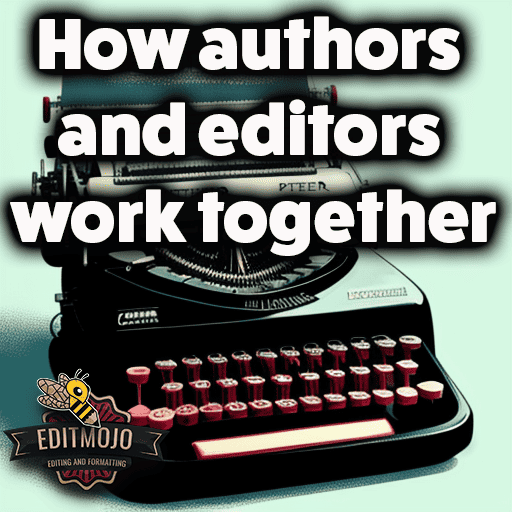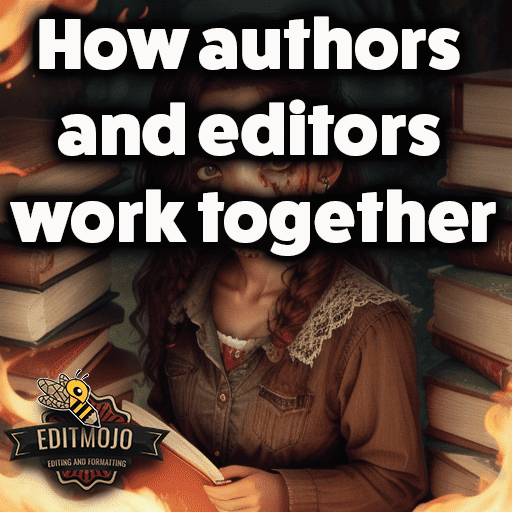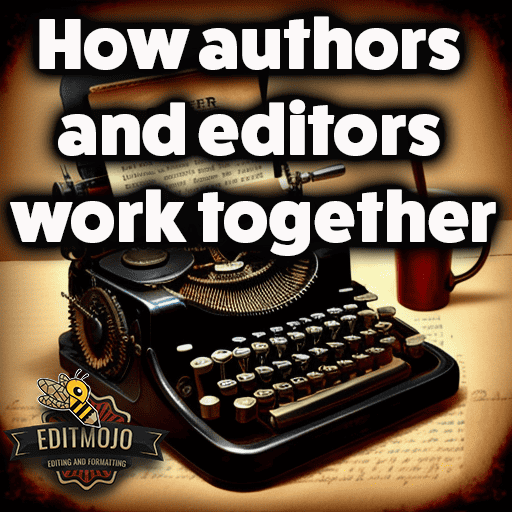How authors and editors work together
How authors and editors work together. In the world of publishing, the relationship between authors and editors is akin to a dance. It’s a delicate balance of give and take, a partnership that, when done right, results in a beautifully polished piece of work. This article delves into the intricate dynamics of the author-editor relationship, exploring the roles, responsibilities, and emotional aspects of this crucial partnership. We’ll also examine how technology, cultural differences, and language nuances can impact this relationship in the context of international publishing.
Key Takeaways
| Section | Key Takeaway |
|---|---|
| The Initial Meeting | The first step in the author-editor relationship is understanding the author’s needs and establishing a frame of reference for the work. |
| The Editing Process | This involves several stages, from the initial assessment of the story to the final proofreading and edits. |
| The Author’s Role | Authors must learn to balance acceptance and resistance to changes, and understand how to handle rejections. |
| The Editor’s Role | Editors must strive to understand and preserve the author’s voice while providing constructive feedback. |
| The Dynamics of the Relationship | The author-editor relationship requires humility, openness to feedback, and a balance of power. |
| The Impact of Technology and Culture | These factors can significantly influence the author-editor relationship, especially in the context of international publishing. |
In the world of publishing, the relationship between authors and editors is akin to a dance. It’s a delicate balance of give and take, a partnership that, when done right, results in a beautifully polished piece of work. But how exactly do authors and editors work together? What roles do they play, and how do they navigate the often complex dynamics of their relationship?

The Initial Meeting (How authors and editors work together)
The dance begins with the initial meeting. Here, the editor seeks to understand the author’s needs and establish a frame of reference for the work. This stage sets the tone for the entire relationship, making it crucial for both parties to communicate openly and honestly.
The Editing Process
Next comes the editing process. This involves several stages, from the initial assessment of the story to the final proofreading and edits. The editor’s role here is to polish the manuscript, identifying problem areas and making necessary changes to enhance the work. This process can be likened to a sculptor chiseling away at a block of marble, gradually revealing the masterpiece within.
The Author’s Role
The author, on the other hand, must learn to balance acceptance and resistance to changes. It’s natural to feel protective of one’s work, but it’s also important to be open to feedback and willing to make necessary revisions. Dealing with rejections is also part of the author’s journey, and learning to take them in stride is a crucial skill.

The Editor’s Role
The editor’s role extends beyond simply making changes to the manuscript. They must strive to understand and preserve the author’s voice while providing constructive feedback. This requires a delicate balance of sensitivity and objectivity, akin to walking a tightrope.
The Dynamics of the Relationship
The dynamics of the author-editor relationship can be complex. It requires humility, openness to feedback, and a balance of power. Both parties must be willing to give and take, and to respect each other’s expertise and perspective.
The Impact of Technology and Culture
In today’s globalized world, technology, cultural differences, and language nuances can significantly influence the author-editor relationship. Understanding these factors is crucial, especially in the context of international publishing.
In conclusion, the author-editor relationship is a dance that requires balance, understanding, and mutual respect. When done right, it can result in a beautifully polished piece of work that both parties
can be proud of.
Top Five Questions and Answers (How authors and editors work together)
Q1: Why is the author-editor relationship important?
A1: The author-editor relationship is crucial as it directly impacts the quality of the final published work. A good relationship can lead to a well-polished, high-quality piece, while a strained relationship can negatively affect the work.
Q2: How can authors and editors establish a good working relationship?
A2: Open communication, mutual respect, and understanding are key to establishing a good working relationship. Both parties should be open to feedback and willing to compromise when necessary.
Q3: What is the role of an editor in the publishing process?
A3: An editor’s role is to polish the manuscript by identifying problem areas, making necessary changes, and providing constructive feedback to enhance the work. They must also strive to preserve the author’s voice and intent.
Q4: How should authors handle rejections and feedback?
A4: Authors should view rejections and feedback as opportunities for growth and improvement. It’s important to take them in stride and use them to improve the work.
Q5: How do technology and culture impact the author-editor relationship?
A5: Technology and culture can significantly influence the author-editor relationship. For instance, technology can facilitate communication and collaboration, while cultural and language differences can present unique challenges in understanding and interpreting the work.

The Long-Term Benefits of a Healthy Author-Editor Relationship
The dance between an author and an editor doesn’t end when the book is published. In fact, a healthy author-editor relationship can lead to long-term benefits that extend far beyond a single project.
Repeat Collaborations (How authors and editors work together)
When authors and editors work well together, they’re more likely to collaborate again in the future. This can lead to a deeper understanding of each other’s styles and preferences, resulting in a smoother and more efficient editing process.
Improved Skills
Authors can learn a great deal from their editors. By being open to feedback and willing to make changes, authors can improve their writing skills and produce higher quality work. Similarly, editors can learn from authors, gaining insights into different writing styles and perspectives.
Greater Satisfaction
There’s a great deal of satisfaction to be derived from a successful author-editor relationship. For authors, there’s the joy of seeing their work polished and ready for publication. For editors, there’s the pride in knowing they’ve helped an author produce their best work.
In the world of publishing, the author-editor relationship is a dance that requires balance, understanding, and mutual respect. When done right, it can result in a beautifully polished piece of work that both parties can be proud of. More than that, it can lead to long-term benefits that extend far beyond a single project. So, let’s keep dancing!
Top Questions and Answers (Continued) (How authors and editors work together)
Q6: What are the long-term benefits of a healthy author-editor relationship?
A6: A healthy author-editor relationship can lead to repeat collaborations, improved skills for both parties, and greater satisfaction in the publishing process.
Q7: Can an author and editor work together on multiple projects?
A7: Absolutely! When authors and editors establish a good working relationship, they often choose to collaborate on multiple projects.
Q8: How can an author-editor relationship improve an author’s writing skills?
A8: Authors can learn a great deal from their editors. By being open to feedback and willing to make changes, authors can improve their writing skills and produce higher quality work.
Q9: What satisfaction can an editor derive from a successful author-editor relationship?
A9: For editors, there’s a sense of pride in knowing they’ve helped an author produce their best work. They also gain satisfaction from seeing a project through to its conclusion and seeing the final polished work.
Q10: How can a healthy author-editor relationship benefit the publishing process?
A10: A healthy author-editor relationship can make the publishing process smoother and more efficient. It can also lead to higher quality work, as both parties understand each other’s styles and preferences.
